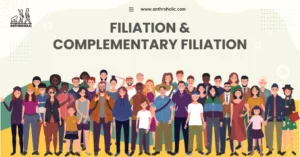AI Answer Evaluation Platform Live Now. Try Free Answer Evaluation Now
Applied Linguistics
Applied Linguistics is a field of study that investigates practical issues involving language use in the real world. In other words, it addresses language-related problems in various contexts, including second language acquisition (L2), language teaching, syllabus design, and language testing and evaluation.

L-2 Output: Nature of Errors and Mistakes
Learning a second language (L2) can be a challenging task, and one of the primary ways that learners show progress is through the production of output. However, this process is often marked by errors and mistakes.
Errors, in this context, refer to consistent deviations made by the learner from the norms of the target language, indicating gaps in their understanding [1]. These could be grammatical, lexical, or phonological errors. Mistakes, on the other hand, are occasional lapses that even proficient users of a language can make due to carelessness, fatigue, or other external factors [2].
Understanding the nature of errors and mistakes is crucial in applied linguistics as it helps in determining the learning strategies of individuals and tailoring teaching methods to address these errors effectively.
Models and Methods
Various models and methods are used in applied linguistics to understand and explain language use and learning. These range from descriptive models that try to depict language as it is, to prescriptive models that provide recommendations on how language should be used or taught [3].
For example, the “Interlanguage” model suggests that learners of a second language develop a linguistic system with its own unique rules that gradually evolve to resemble the target language [4]. This model has influenced teaching methods to focus on learners’ current linguistic competencies rather than their mistakes.
Syllabus Design
In the context of language teaching, syllabus design is an essential part of applied linguistics. A well-designed syllabus considers the learners’ needs, the objectives of the course, and the teaching methods to be employed.
Key elements of syllabus design include:
- Identifying the learners’ needs and goals
- Setting clear learning objectives
- Selection and organization of course content
- Deciding on teaching methods and resources
- Assessing learners’ progress
A well-designed syllabus should be flexible enough to adapt to the learners’ progress and changing needs.
Basics of Language Testing & Evaluation
Language testing and evaluation are fundamental aspects of applied linguistics, particularly in language learning and teaching. They provide a means of assessing the effectiveness of language instruction and the learners’ proficiency in the target language.
Language testing involves:
- Designing tests that accurately measure language skills
- Administering the tests
- Interpreting the results
Evaluation, on the other hand, involves assessing the effectiveness of language programs, teaching methods, and materials. This is done through various methods such as classroom observation, feedback from learners, and analysis of test results.
| Testing Activity | Purpose |
|---|---|
| Designing Tests | Measure language skills |
| Administering Tests | Evaluate learner proficiency |
| Interpreting Results | Identify gaps in learning |
| Evaluation Activity | Purpose |
|---|---|
| Classroom Observation | Assess teaching methods |
| Feedback from Learners | Identify areas for improvement |
| Analysis of Test Results | Evaluate effectiveness of teaching |
Pedagogical Implications of Applied Linguistics
Beyond just theory, applied linguistics has significant pedagogical implications. It guides the development of effective teaching strategies that take into account the learners’ language use, linguistic abilities, and learning preferences. It provides a solid foundation for the creation of learning materials, syllabi, and language tests. It also shapes the classroom dynamics, informing teaching approaches to support language learning in an engaging and productive environment.
The Role of Errors and Mistakes
In a classroom setting, understanding the nature of errors and mistakes allows teachers to provide targeted feedback that aids the learning process. This feedback helps learners correct their mistakes and reduce their errors over time. Teachers can use these insights to adapt their teaching methods and develop strategies that address the specific needs of their students.
The Relevance of Models and Methods
Different models and methods offer a wide array of strategies for language teaching. For example, the Communicative Language Teaching (CLT) method emphasizes the use of language for communication, whereas the Audio-Lingual Method (ALM) focuses on drills and repetition. Knowledge of these models and methods empowers teachers to select or adapt the ones that best suit their teaching goals and the learning context.
The Impact of Syllabus Design
A well-designed syllabus ensures that the language course is systematically organized and that the learning objectives are clear and achievable. It helps align the teaching methods and materials with the learners’ needs and the course objectives. It also provides a roadmap for both the teachers and the learners, facilitating a structured and coherent learning process.
The Importance of Language Testing & Evaluation
Language testing allows for the assessment of learners’ proficiency, thereby informing both teaching and learning. By highlighting areas of strength and weakness, tests can guide future instruction and learning activities. Evaluation, on the other hand, ensures the quality and effectiveness of language programs, contributing to their continuous improvement.
| Testing & Evaluation Activity | Impact on Teaching and Learning |
|---|---|
| Language Testing | Guides instruction and learning activities |
| Program Evaluation | Ensures quality and effectiveness of language programs |
Conclusion
The field of applied linguistics is multifaceted, encompassing an understanding of errors and mistakes in second language output, the adoption of various models and methods, effective syllabus design, and the essentials of language testing and evaluation. By bridging the gap between theory and practice, applied linguistics plays a vital role in enhancing the process of language teaching and learning, ensuring a more engaging and effective learning experience for all.
References
- Brown, H. D. (2000). Principles of Language Learning and Teaching. Pearson Education.
- Ellis, R. (1994). The Study of Second Language Acquisition. Oxford University Press.
- Richards, J. C., & Rodgers, T. S. (2001). Approaches and Methods in Language Teaching. Cambridge University Press.
- Selinker, L. (1972). Interlanguage. International Review of Applied Linguistics.




